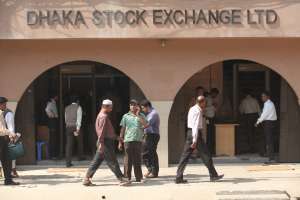
The US Fed has been winding down its bond purchase program, widely known as “quantitative easing,” since December 2013. The program was introduced in the wake of the 2008 global financial crisis to fight the recession and foster a rapid economic recovery. With the improvement in the US economy, the Fed suggested at its policy meeting in March that the program may end this coming fall and it may start raising interest rates about six months from then.
The fear of US rate hikes triggered yet another sell-off right after the meeting, bringing down equity prices and widening credit spreads across Asia. The MSCI equity market index for Asia excluding Japan lost 6.3 basis points, or 1.24%, in the week of 17 March alone. Bond markets also slumped, while credit spreads widened. The JP Morgan Emerging Bond Market Index recorded spreads ranging from 287–295.7 basis points for sovereign, and 176–187 basis points for corporates. The prospect of a possible slowdown in the People’s Republic of China is further weighing on investors’ confidence in Asia.
The higher cost of capital reflecting heightened financial volatility and risk premiums would have important implications for future economic growth in many Asian economies, especially those which rely on foreign capital to fund their vital investments. Previous experience suggests the loss of real income in emerging Asia can amount to nearly half a percentage point reduction in real GDP growth for each 1 percentage point increase in the US interest rate.
Impact of US monetary policy on Asia
Historically, a tightening cycle in US monetary policy often adversely affected Asian economies by reducing aggregate demand through various channels. First, higher yields on US assets attract capital, thus reversing international capital flows. Heightened uncertainty combined with declining international liquidity and weakening currency conditions add to volatility in emerging markets, further hiking risk premiums, and therefore increasing the cost of capital.
Second, the transmission of higher US interest rates through international capital markets yields higher domestic rates, exerting downward pressure on domestic investment and consumption. Previous studies show that global transmission of interest rates is significant for developing countries. Empirical evidence indicates that local interest rates in Asian developing economies tend to follow movements in short-term US rates regardless of existing exchange rate regimes.
Third, expectations of higher interest rates may dampen global consumption spending, hence reducing external demand for Asian exports. Higher interest rates also raise the borrowing cost of and debt-service burdens on the government and public sector.
Emerging Asian economies are not a homogenous group and the impacts of higher US interest rates are unlikely to be uniform. Countries with external imbalances or a reliance on external funding would be the most vulnerable to the effects of higher rates. This is why Asian countries with substantial budget and current account deficits—Indonesia and India for example—are the ones that have been hit the most since QE started late last year. Prudential fiscal management has proven to be key in safeguarding financial stability in the global tightening cycle. Governments in vulnerable economies should exercise rigorous fiscal discipline and start consolidating budget deficits.
Hopeful signs
The regional economic picture is not all bleak though. While risks of higher interest rates remain real, to what extent they will materialize, is highly uncertain. There are also some positive factors. First, US policy rates are unlikely to rise significantly higher in the near term given the fragility of the US recovery and its job market, and considering a substantial overhang of US fiscal and current account deficits and debt-laden households.
Second, Asian economies have generally reduced their reliance on short-term external debt while building up their foreign exchange reserves since the financial crisis, which makes them more resilient to a sudden reversal in capital flows. Third, there has been a significant strengthening in the domestic demand base in many Asian economies, which may help them cope with potential demand shocks, even as a modest recovery in advanced economies continues. Governments should be ready to provide support in reaction to any serious fallout in demand.
In a rising rates environment, it is crucial that the authorities foster a positive investment climate through deeper structural reforms. As investors carefully scrutinize risks and returns in individual emerging markets, sustained progress in economic reforms to improve productivity and competitiveness ultimately determines a country’s attractiveness as an investment destination.
This article was first published by the ADB Development Blog.







Comments are closed.